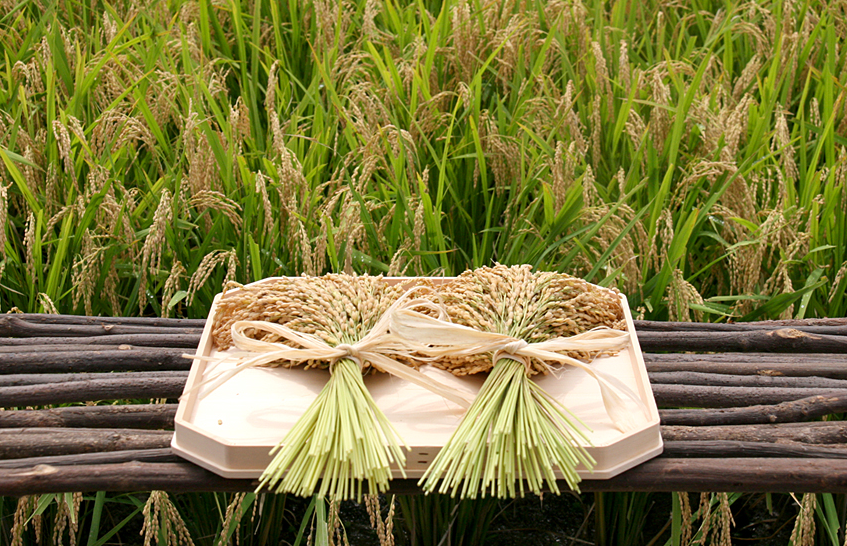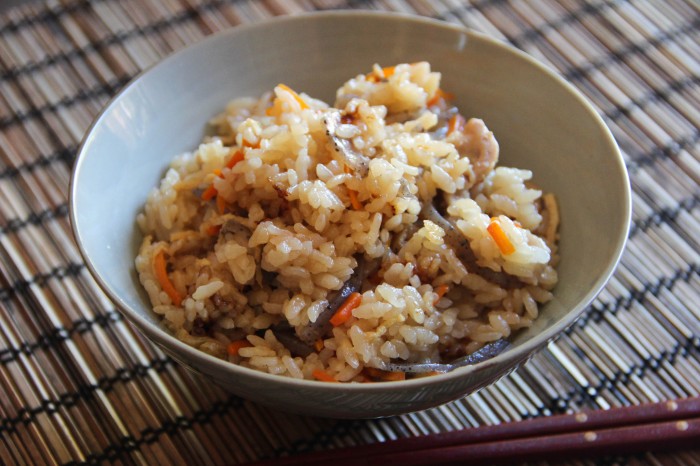
In Japan, rice is more than just sustenance. It holds symbolic and sacred significance. Rice yield was also a measurement of wealth during the Edo Period (1603-1868).
Early records of rituals celebrating the harvest and entreating future prosperity, called nii namé sai can be found in the Nihon Shoki (The Chronicles of Japan, 720 AD), the second-oldest book of classical Japanese history. Today, nii namé sai “thanksgiving” celebrations take place in Shrines throughout Japan on or about November 29th.
Nii namé sai celebrations were the origin of today’s national holiday, Kinrō Kansha no Hi, observed on November 23. It celebrates labor and production and thanks those in our communties for their daily efforts.

I chose to feature KAYAKU GOHAN, rice cooked with bits of vegetables in a flavorful broth, as this month’s recipe because it exemplifies the spirit of culinary kansha (gratitude) embodied in so many thanksgiving rituals worldwide.
To find out more about this dish and a recipe for making it, visit PROJECT Kayaku Gohan.
And, to find out more about Thanksgiving rituals in Japan, read my November, 2024 newsletter.




